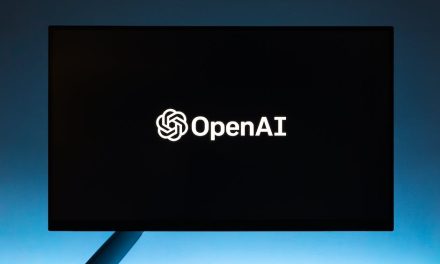Table of Contents
- Introduction
- The Impact of Technology on Performance Management
- Redefining Employee Feedback and Recognition
- The Shift Towards Continuous Performance Management
- Developing a Coaching Culture for Millennials
- Integrating Goal Setting and Alignment with Millennial Values
- Leveraging Data and Analytics for Performance Insights
- Addressing Work-Life Balance and Wellbeing in Performance Management
- The Role of Diversity and Inclusion in Performance Management
- Q&A
- Conclusion
“Revolutionizing performance management for the millennial workforce.”
Introduction
The transformation of performance management in the millennial age has been a topic of much discussion and debate in recent years. With the rise of a new generation entering the workforce, organizations are reevaluating traditional approaches to performance evaluation and feedback. This shift is driven by the unique characteristics and preferences of millennials, who value transparency, continuous feedback, and opportunities for growth and development. As a result, many companies are adopting more agile and technology-driven performance management systems to better meet the needs and expectations of this new generation of employees.
The Impact of Technology on Performance Management
Performance management has long been a critical aspect of organizational success, providing a framework for setting goals, evaluating employee performance, and driving continuous improvement. However, in the millennial age, the landscape of performance management is undergoing a significant transformation, largely driven by advancements in technology. The impact of technology on performance management is profound, reshaping traditional practices and paving the way for more agile, data-driven approaches.
One of the key ways in which technology is revolutionizing performance management is through the use of digital tools and platforms. These tools enable organizations to collect and analyze vast amounts of data on employee performance, allowing for more accurate and timely assessments. For example, performance management software can track key performance indicators, provide real-time feedback, and facilitate ongoing communication between managers and employees. This not only streamlines the performance evaluation process but also enables more personalized and targeted development plans.
Furthermore, technology has enabled the shift towards continuous feedback and coaching in performance management. Rather than relying on annual or semi-annual reviews, organizations are increasingly adopting a more agile approach to performance management, with regular check-ins and feedback sessions. This continuous feedback loop allows for more immediate course corrections, fosters a culture of ongoing learning and development, and ultimately leads to higher levels of employee engagement and performance.
Another significant impact of technology on performance management is the rise of data-driven decision-making. With the proliferation of analytics tools and dashboards, organizations can now leverage data to gain deeper insights into employee performance trends, identify areas for improvement, and make more informed decisions. By harnessing the power of data, organizations can better align individual performance with organizational goals, drive strategic initiatives, and optimize workforce productivity.
Moreover, technology has facilitated the integration of performance management with other HR processes, such as talent management and learning and development. By leveraging integrated platforms and systems, organizations can create a seamless and holistic approach to managing employee performance, talent, and development. This integration not only enhances the overall employee experience but also enables organizations to better align individual performance with broader talent management strategies.
In conclusion, the impact of technology on performance management in the millennial age is undeniable. From digital tools and platforms to continuous feedback and data-driven decision-making, technology is reshaping traditional practices and driving a more agile, personalized, and strategic approach to performance management. As organizations continue to embrace the digital transformation of performance management, they will be better positioned to unlock the full potential of their workforce, drive organizational success, and thrive in the ever-evolving business landscape.
Redefining Employee Feedback and Recognition
Performance management has long been a critical aspect of organizational success, with companies relying on it to evaluate employee performance, provide feedback, and recognize achievements. However, in the millennial age, traditional performance management practices are being redefined to better meet the needs and expectations of this generation of workers.
One of the key changes in performance management in the millennial age is the shift towards more frequent and informal feedback. Millennials, who have grown up in a world of instant communication and feedback, value ongoing feedback that is timely, specific, and actionable. This has led many organizations to move away from annual performance reviews in favor of more regular check-ins and feedback sessions.
These regular feedback sessions allow managers to provide real-time feedback on employee performance, address any issues or concerns as they arise, and offer guidance on how employees can improve and grow in their roles. This approach not only helps employees stay on track and make continuous improvements but also fosters a culture of open communication and transparency within the organization.
In addition to more frequent feedback, the millennial age has also seen a shift towards more personalized and individualized recognition. Millennials value recognition and appreciation for their contributions, and they respond well to personalized recognition that acknowledges their unique skills, strengths, and achievements.
Organizations are increasingly recognizing the importance of recognizing employees in a way that is meaningful and relevant to them. This could involve anything from a simple thank you note or shoutout in a team meeting to more formal recognition programs that reward employees for their hard work and dedication.
By personalizing recognition efforts, organizations can show employees that their contributions are valued and appreciated, which can help boost morale, motivation, and engagement. This, in turn, can lead to higher levels of job satisfaction, productivity, and retention among millennial employees.
Another important aspect of performance management in the millennial age is the use of technology to streamline and enhance the performance management process. Many organizations are leveraging technology to automate performance reviews, track employee progress, and provide real-time feedback and recognition.
Technology can help make the performance management process more efficient, transparent, and data-driven. It can also provide managers and employees with valuable insights into performance trends, areas for improvement, and opportunities for growth.
Furthermore, technology can enable organizations to gather and analyze data on employee performance, which can help identify patterns, trends, and areas of concern. This data-driven approach to performance management can help organizations make more informed decisions about talent development, succession planning, and overall organizational performance.
In conclusion, the transformation of performance management in the millennial age is reshaping the way organizations provide feedback and recognition to their employees. By embracing more frequent and informal feedback, personalized recognition, and technology-driven solutions, organizations can create a more engaging, transparent, and effective performance management process that meets the needs and expectations of millennial employees. This, in turn, can help drive employee engagement, motivation, and ultimately, organizational success in the millennial age.
The Shift Towards Continuous Performance Management

Performance management has long been a critical aspect of organizational success, providing a framework for setting goals, evaluating employee performance, and driving continuous improvement. However, in recent years, the traditional approach to performance management has come under scrutiny, particularly in light of the changing workforce dynamics brought about by the rise of the millennial generation.
Millennials, who now make up the largest segment of the workforce, have different expectations and preferences when it comes to performance management. They value regular feedback, opportunities for growth and development, and a more collaborative and transparent approach to goal-setting and evaluation. As a result, many organizations are rethinking their performance management processes to better align with the needs and preferences of this new generation of employees.
One of the key trends that has emerged in response to the changing workforce dynamics is the shift towards continuous performance management. Unlike the traditional annual performance review process, which often involves a once-a-year evaluation of employee performance, continuous performance management involves ongoing feedback, coaching, and goal-setting throughout the year.
This shift towards continuous performance management is driven by a recognition that the pace of change in today’s business environment requires a more agile and responsive approach to managing performance. By providing regular feedback and coaching, organizations can help employees stay on track, address performance issues in a timely manner, and make adjustments to goals and objectives as needed.
In addition to providing more frequent feedback, continuous performance management also emphasizes the importance of setting clear and measurable goals that are aligned with the organization’s overall objectives. By setting goals that are specific, measurable, achievable, relevant, and time-bound (SMART), employees have a clear roadmap for success and can track their progress towards achieving their objectives.
Another key aspect of continuous performance management is the use of technology to facilitate communication and collaboration between managers and employees. Many organizations are leveraging performance management software platforms that enable real-time feedback, goal-setting, and performance tracking, making it easier for employees and managers to stay connected and aligned on performance expectations.
By embracing continuous performance management, organizations can create a more dynamic and responsive approach to managing performance that is better suited to the needs and preferences of the millennial workforce. This shift towards ongoing feedback, coaching, and goal-setting can help employees stay engaged, motivated, and focused on achieving their full potential.
In conclusion, the transformation of performance management in the millennial age is a reflection of the changing workforce dynamics and the need for organizations to adapt to meet the needs and preferences of this new generation of employees. By embracing continuous performance management, organizations can create a more agile and responsive approach to managing performance that fosters collaboration, transparency, and ongoing development. As the workforce continues to evolve, it is essential for organizations to continue to innovate and evolve their performance management processes to ensure they remain relevant and effective in today’s fast-paced business environment.
Developing a Coaching Culture for Millennials
Performance management has long been a critical aspect of organizational success, providing a framework for setting goals, evaluating progress, and rewarding achievement. However, as the workforce continues to evolve, so too must the methods by which performance is managed. In the millennial age, where employees value feedback, growth, and development more than ever before, organizations are increasingly turning to coaching as a means of enhancing performance management.
Coaching is a powerful tool for unlocking potential and driving performance. Unlike traditional performance management approaches that focus on evaluation and appraisal, coaching emphasizes collaboration, support, and continuous improvement. By fostering a coaching culture within an organization, leaders can empower employees to take ownership of their development, set meaningful goals, and achieve their full potential.
One of the key benefits of coaching is its emphasis on ongoing feedback and dialogue. Millennials, in particular, crave regular feedback and guidance from their managers, and coaching provides a structured framework for these conversations to take place. By engaging in regular coaching sessions, employees can receive real-time feedback on their performance, identify areas for improvement, and work collaboratively with their managers to address any challenges they may be facing.
In addition to providing feedback, coaching also helps to develop employees’ skills and capabilities. Through coaching, employees can receive personalized development plans tailored to their individual strengths and weaknesses. This targeted approach to development not only enhances performance but also fosters a sense of engagement and commitment among employees, as they feel supported in their growth and development.
Furthermore, coaching can help to build trust and rapport between managers and employees. By engaging in open and honest conversations, managers can demonstrate their commitment to supporting their employees’ success and well-being. This trust and rapport are essential for creating a positive work environment where employees feel valued, respected, and motivated to perform at their best.
To develop a coaching culture within an organization, leaders must invest in training and development for both managers and employees. Coaching is a skill that requires practice and refinement, and by providing the necessary training and resources, organizations can ensure that their leaders are equipped to effectively coach their teams. Additionally, organizations can encourage a coaching mindset by recognizing and rewarding managers who demonstrate strong coaching skills and behaviors.
In conclusion, the transformation of performance management in the millennial age requires a shift towards a coaching culture. By embracing coaching as a means of enhancing performance management, organizations can empower employees to take ownership of their development, receive regular feedback and support, and achieve their full potential. Through coaching, organizations can build trust, develop skills, and foster a positive work environment where employees feel valued and motivated to succeed. As the workforce continues to evolve, organizations that prioritize coaching will be better positioned to attract, retain, and develop top talent in the millennial age.
Integrating Goal Setting and Alignment with Millennial Values
Performance management has long been a critical aspect of organizational success, providing a framework for setting goals, evaluating progress, and rewarding achievement. However, as the workforce continues to evolve, so too must the practices and processes of performance management. In the millennial age, where values such as collaboration, transparency, and personal development are paramount, organizations are rethinking how they approach performance management to better align with the expectations and preferences of this generation.
One key aspect of this transformation is the integration of goal setting and alignment with millennial values. Traditional performance management systems often rely on top-down goal setting, where objectives are determined by senior leadership and cascaded down to individual employees. While this approach may have worked in the past, it can be seen as rigid and hierarchical by millennials, who value autonomy and input in goal setting.
To address this, organizations are moving towards a more collaborative approach to goal setting, where employees have a say in defining their objectives and are encouraged to align them with the broader goals of the organization. This not only fosters a sense of ownership and accountability among employees but also ensures that goals are relevant and meaningful to the individual, leading to increased motivation and engagement.
Furthermore, organizations are recognizing the importance of aligning individual goals with the values and purpose of the organization. Millennials are known for seeking meaning and purpose in their work, and are more likely to be engaged and motivated when they see how their contributions align with the larger mission of the organization. By integrating goal setting with organizational values, organizations can create a sense of purpose and direction for employees, driving performance and commitment.
Another key aspect of integrating goal setting and alignment with millennial values is the emphasis on continuous feedback and development. Millennials value ongoing feedback and opportunities for growth, and traditional performance management systems that rely on annual reviews are no longer sufficient. Organizations are moving towards more frequent check-ins and feedback sessions, where managers provide real-time feedback and support to help employees achieve their goals.
In addition, organizations are investing in development opportunities such as training, coaching, and mentoring to help employees build the skills and capabilities they need to succeed. By prioritizing development and growth, organizations can not only improve performance but also retain top talent and foster a culture of continuous learning and improvement.
Overall, the transformation of performance management in the millennial age is a reflection of the changing expectations and preferences of the workforce. By integrating goal setting and alignment with millennial values, organizations can create a more engaging and effective performance management system that drives performance, engagement, and retention. As organizations continue to adapt to the needs of the millennial workforce, it is clear that performance management will play a critical role in shaping the future of work.
Leveraging Data and Analytics for Performance Insights
Performance management has long been a critical aspect of organizational success, providing a framework for setting goals, evaluating progress, and rewarding high performers. However, in the millennial age, traditional performance management practices are being transformed by the use of data and analytics to provide deeper insights into employee performance.
One of the key ways in which data and analytics are revolutionizing performance management is through the use of real-time feedback. In the past, performance evaluations were typically conducted on an annual or semi-annual basis, leaving employees with little guidance on how to improve their performance in the interim. With the advent of data-driven performance management systems, employees can now receive continuous feedback on their performance, allowing them to make adjustments in real-time and stay on track towards their goals.
Another way in which data and analytics are reshaping performance management is through the use of predictive analytics. By analyzing historical performance data, organizations can now predict future performance trends and identify potential areas for improvement. This allows managers to proactively address performance issues before they become major problems, leading to more effective performance management overall.
Furthermore, data and analytics are enabling organizations to personalize performance management for individual employees. By analyzing data on each employee’s performance, preferences, and work habits, organizations can tailor performance management strategies to meet the unique needs of each employee. This personalized approach not only improves employee engagement and satisfaction but also leads to better overall performance outcomes.
In addition to providing insights into individual performance, data and analytics are also being used to evaluate team performance. By analyzing data on team dynamics, collaboration, and communication, organizations can identify areas where teams are excelling and areas where they may need additional support. This allows managers to make informed decisions about team composition, training, and development, leading to more effective team performance overall.
Overall, the transformation of performance management in the millennial age is being driven by the power of data and analytics to provide deeper insights into employee performance. By leveraging real-time feedback, predictive analytics, and personalized performance management strategies, organizations can improve employee engagement, satisfaction, and overall performance outcomes. As organizations continue to embrace data-driven performance management practices, they will be better equipped to navigate the challenges of the millennial age and drive success in the modern workplace.
Addressing Work-Life Balance and Wellbeing in Performance Management
Performance management has long been a critical aspect of organizational success, with companies using various methods to evaluate and improve employee performance. However, as the workforce continues to evolve, so too must the way in which performance management is approached. In the millennial age, there is a growing emphasis on work-life balance and employee wellbeing, leading to a transformation in how performance management is conducted.
One of the key shifts in performance management in the millennial age is the recognition of the importance of work-life balance. Millennials, who now make up a significant portion of the workforce, place a high value on having time for personal pursuits and maintaining a healthy balance between work and life. As a result, organizations are increasingly incorporating work-life balance initiatives into their performance management processes.
For example, some companies are implementing flexible work arrangements, such as telecommuting or flexible hours, to allow employees to better manage their work and personal responsibilities. By giving employees more control over when and where they work, organizations are able to support their employees in achieving a better work-life balance, which can lead to increased job satisfaction and productivity.
In addition to work-life balance, employee wellbeing is also becoming a central focus in performance management. Organizations are recognizing that employee wellbeing is closely linked to performance and are taking steps to support their employees’ physical, mental, and emotional health.
This can include providing access to wellness programs, mental health resources, and stress management tools. By prioritizing employee wellbeing, organizations are not only showing that they care about their employees’ health and happiness, but they are also investing in the long-term success of their workforce.
Furthermore, the millennial age has brought about a shift towards a more holistic approach to performance management. Rather than solely focusing on traditional metrics such as productivity and output, organizations are now considering a broader range of factors that contribute to overall performance.
This can include factors such as employee engagement, collaboration, and creativity. By taking a more holistic approach to performance management, organizations are able to better understand the unique strengths and challenges of each employee and provide more targeted support and development opportunities.
Another important aspect of performance management in the millennial age is the use of technology to enhance the process. With the rise of digital tools and platforms, organizations are able to collect and analyze data more efficiently, track progress in real-time, and provide more personalized feedback to employees.
For example, some companies are using performance management software that allows employees to set goals, track their progress, and receive feedback from managers and peers. By leveraging technology in this way, organizations are able to streamline the performance management process and make it more transparent and accessible to employees.
In conclusion, the transformation of performance management in the millennial age is driven by a growing emphasis on work-life balance, employee wellbeing, a holistic approach to performance, and the use of technology. By adapting to these changes, organizations can create a more supportive and engaging work environment that fosters employee growth and success. As the workforce continues to evolve, it is essential for organizations to stay ahead of the curve and embrace new approaches to performance management that align with the needs and values of the millennial generation.
The Role of Diversity and Inclusion in Performance Management
Performance management has long been a critical aspect of organizational success, providing a framework for setting goals, evaluating progress, and rewarding employees for their contributions. However, as the workforce continues to evolve, so too must the practices and processes that govern performance management. In the millennial age, where diversity and inclusion are at the forefront of organizational priorities, it is essential to consider how these factors impact performance management.
Diversity and inclusion have become increasingly important in the workplace, as organizations recognize the value of a diverse workforce in driving innovation, creativity, and overall success. In the context of performance management, diversity and inclusion play a crucial role in ensuring that all employees are given equal opportunities to succeed and are recognized for their unique contributions.
One of the key ways in which diversity and inclusion impact performance management is through the setting of goals and expectations. In a diverse workforce, employees may have different backgrounds, experiences, and perspectives that shape their approach to work. By taking these differences into account when setting goals, organizations can ensure that all employees are given the opportunity to excel in their roles.
Furthermore, diversity and inclusion can also influence the way in which performance is evaluated. Traditional performance management systems often rely on standardized metrics and criteria to assess employee performance. However, in a diverse workforce, these one-size-fits-all approaches may not accurately capture the contributions of all employees.
To address this challenge, organizations are increasingly turning to more flexible and inclusive performance management practices that take into account the unique strengths and abilities of each individual. This may involve incorporating a broader range of performance metrics, providing more frequent feedback, or allowing employees to set their own goals and objectives.
In addition to setting goals and evaluating performance, diversity and inclusion also play a crucial role in recognizing and rewarding employees for their contributions. In a diverse workforce, it is essential to ensure that all employees are given equal opportunities for advancement and recognition, regardless of their background or identity.
By creating a culture of inclusivity and equity, organizations can foster a sense of belonging and engagement among all employees, leading to higher levels of motivation, productivity, and overall performance. This, in turn, can help organizations attract and retain top talent, drive innovation and creativity, and ultimately achieve their business goals.
In conclusion, the transformation of performance management in the millennial age requires organizations to consider the role of diversity and inclusion in shaping their practices and processes. By taking a more inclusive and equitable approach to performance management, organizations can ensure that all employees are given the opportunity to succeed and are recognized for their unique contributions. This, in turn, can lead to higher levels of employee engagement, motivation, and performance, ultimately driving organizational success in the modern workplace.
Q&A
1. What are some key trends driving the transformation of performance management in the millennial age?
– Increased focus on continuous feedback and coaching
– Emphasis on employee development and growth
– Use of technology for real-time performance tracking
2. How are organizations adapting their performance management processes to better suit millennials?
– Moving away from traditional annual reviews to more frequent check-ins
– Incorporating peer feedback and self-assessments
– Providing opportunities for skill development and career advancement
3. What role does technology play in the transformation of performance management for millennials?
– Enables real-time feedback and performance tracking
– Facilitates remote and flexible work arrangements
– Supports data-driven decision-making and performance analysis
4. How can organizations ensure that their performance management processes are effective for millennials?
– Aligning performance goals with individual and organizational objectives
– Providing regular and constructive feedback
– Encouraging open communication and transparency
5. What are some challenges organizations may face when implementing new performance management practices for millennials?
– Resistance to change from employees and managers
– Ensuring consistency and fairness in evaluations
– Balancing the use of technology with human interaction
6. How can organizations measure the success of their performance management initiatives for millennials?
– Employee engagement and satisfaction surveys
– Performance metrics such as productivity and retention rates
– Feedback from employees and managers on the effectiveness of the process
7. What are some best practices for designing a performance management system that caters to millennials?
– Setting clear expectations and goals
– Providing regular feedback and coaching
– Offering opportunities for skill development and career growth
8. How can organizations ensure that their performance management practices remain relevant and effective as millennials continue to enter the workforce?
– Staying informed about current trends and best practices in performance management
– Soliciting feedback from employees on their preferences and needs
– Continuously evaluating and adjusting the performance management process to meet changing demands
Conclusion
In conclusion, the transformation of performance management in the millennial age is characterized by a shift towards more frequent feedback, a focus on individual development, and the use of technology to enhance the process. This evolution reflects the changing priorities and expectations of the millennial workforce, and organizations that embrace these changes are likely to see improved employee engagement and performance.





